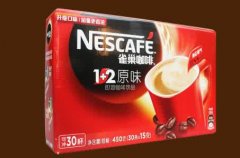Starbucks responds to China's profiteering: the price is 10 times the cost of materials

The price is nearly 10 times the cost of materials, and it is difficult to justify Starbucks' cost.
Even mugs made in China cost nearly half as much as those made in the United States.
Starbucks in China costs more than just coffee in places such as the United States. The "MadeinChina" mugs sold by Starbucks are cheaper in the United States than in China after adding tariffs and transportation costs.
Miss Zhu, who traveled to the United States during the National Day holiday, brought back a mug bought from a Starbucks in Seattle, the United States, with a list price of $10 and a 9% tax price of $10.9 (66.7 yuan). Similar mugs sell for about 100 yuan in China. What surprises Miss Zhu even more is the MadeinChina mug bought in the United States.
After paying import and export duties and increasing the cost of cross-ocean logistics, Chinese-made Starbucks mugs are 1/3 cheaper in the United States than in China.
Starbucks explained that operating costs in China are different from market drivers when it reported on the 8th that "Starbucks China is profiteering": profit margins in the Asia-Pacific region are 16 times higher than those in Europe. However, judging from the price of a mug, Starbucks blames the huge internal and external price difference on the cost.
The cost increases but the price is lower.
However, Miss Zhu told this newspaper that in the United States, it is not only drinks such as coffee that are cheaper than China, but also cups made in China are much cheaper than those made in China. Take mugs as an example, the price is US $10-14, while the price of Starbucks mugs seen by reporters in China is 95-110 yuan. Starbucks stainless steel cups sell for about US $16-20 in the United States, while stainless steel cups in domestic Starbucks stores sell for between 220-350 yuan. If the raw material cost of a cup of Chinese coffee may be due to the increase in logistics, tariffs and other costs due to the transportation of coffee beans to China, why is there such a big price difference in Starbucks cups made in China?
Starbucks has told reporters that Starbucks' pricing is based on a comprehensive consideration of various operating costs such as raw materials and equipment, infrastructure investment, logistics and transportation, employee compensation and benefits, rent, exchange rate and import duties. Compared with the United States, the raw material cost of Starbucks coffee in China has increased the logistics cost and tariff cost of shipping from the United States to China, which has had a certain impact on the high price in China.
Relevant food marketing experts said that from the point of view of Starbucks cups, most of the costs are concentrated in cup manufacturing costs and transportation costs, which are definitely higher in the United States than in China because they are made in China. Other employee benefits, rents and other costs shared on the cup are almost negligible, even if these costs are added, they may not be higher than in the United States.
The price is nearly 10 times the cost of the material.
In terms of material costs, Wang Zhendong, president of the Coffee Industry Association of Shanghai Food Association, told reporters that in terms of raw material costs, Starbucks' raw materials are mainly coffee beans and milk. Coffee beans are shipped to the United States for baking after global international procurement, and then the cooked coffee beans are shipped everywhere. Therefore, compared with the United States, Chinese coffee beans have to increase logistics costs from the United States to China and customs duties (about 15%). Even so, the cost of coffee beans increases by only a few cents per cup of coffee.
Wang Zhendong estimated to the reporter that a medium cup of American coffee priced at 25 yuan would cost about 20 grams of coffee beans and a disposable paper cup. According to the current market price of 100 yuan / kg of high-quality cooked coffee beans, 20 grams of coffee beans cost 2 yuan, disposable paper cups cost about 0.6 yuan, such a cup of Starbucks American coffee material cost is 2.6 yuan But the price is nearly 10 times the cost of the material.
Wang Zhendong also revealed that, in fact, the global price of coffee beans has been falling in recent years, and the price of coffee beans is now nearly 30% lower than it was around 2011. Last year, Starbucks raised its prices in China twice in a row, with a total price increase of 3-4 yuan per cup.
In terms of operating costs, it is mainly reflected in labor costs and rental costs. As we all know, the per capita income gap between China and the United States is huge. According to the per capita GDP data of various countries and regions in the world released by IMF (International Monetary Fund) in 2013, the per capita GDP of China is only 1/9 of that of the United States. The huge income gap directly reflects that the labor cost in China is much lower than that in the United States.
In this regard, Starbucks explained to reporters that compared with the US market, the Chinese market is still in the early stage of development, and there is a lot of investment in infrastructure construction at this stage, and the number of stores in China is much smaller than that in the US market. That is, the overall scale is relatively small, making some costs relatively high, such as logistics, warehousing and so on. But Starbucks declined to provide specific cost figures.
Food retail experts said that in terms of various costs, there is certainly a certain gap between China and the United States, but more than 90% of the costs are concentrated in the costs of materials, labor, and rent. at present, none of these three major costs is higher or even much lower than that in the United States. It is obvious that the price of Starbucks products in China is much higher than that in the United States.
Starbucks dominates domestic prices
Starbucks' explanation for the high price also mentioned the market motivation, but did not give a detailed explanation.
Wang Zhendong said that domestic consumers' superstition in foreign brands such as Starbucks is the main reason. From a global point of view, Starbucks is equivalent to McDonald's in catering, but exists as a coffee of stable quality for consumers. It is supposed to be a popular consumer product. According to the per capita income comparison, the price in China should be about 10 yuan per cup.
Wang Zhendong said frankly that in order to change the status quo, we need the rise of local coffee brands. At present, the coffee market is mainly guided by overseas brands. Brands such as Starbucks and Costa hold the pricing power in the Chinese market, while many domestic coffee brands with much better quality than Starbucks have very little passenger flow even if the price is much lower than that of Starbucks. In addition, it also needs a change in consumers' consumption concept, and we should not blindly believe in brands such as Starbucks and regard Starbucks coffee as a kind of high-end consumption.
Important Notice :
前街咖啡 FrontStreet Coffee has moved to new addredd:
FrontStreet Coffee Address: 315,Donghua East Road,GuangZhou
Tel:020 38364473
- Prev

Does Nestl é open a coffee shop? You have to bring your own instant solution when you enter the store, there's nothing wrong with it.
For professional baristas, please follow the coffee workshop (Wechat official account cafe_style). Recently, Nestl é opened a coffee shop in Toronto, Canada. Well, we usually hear a lot of Nestle coffee. Nestl é runs a coffee shop that sells Nestle coffee. No problem
- Next

Nestl é plans to sell its chocolate and confectionery brands to focus on coffee and health products
According to Bloomberg news, global food giant Nestl é plans to sell its Butterfinger, BabyRuth and other confectionery brands in the United States due to weak demand for chocolate, with a focus on developing its high-demand coffee and health products business. This will be the new appointment of Nestl é.
Related
- Why can American refills for free? The difference between Americano and American drip pot coffee
- Being chased out of the rain in front of Starbucks?! Store: Sheltering from rain under umbrellas poses a safety hazard
- The white moonlight has changed?! Lucky launches "Big Winter Pear American"
- Hand-brewed coffee three-stage method, high-sweet and universal brewing method to share! What does the high sweet water level of hand-brewed coffee mean?
- What is the difference between raw, refined and full espresso coffee? How to extract espresso and taste good?
- A complete list of coffee bean names and their meanings! What is Yejia Shefi coffee? Where is Mantelin coffee?
- What grade does Arida Manor Kaduai coffee beans belong to? What treatment is Arida ASD slow anaerobic sun exposure?
- The milk tea cup becomes smaller?! Overlord Tea Girl launches a new "Return to Yunnan" series
- Accused of selling counterfeit and high-priced coffee beans! Well-known boutique coffee brand "Oukelao" bowed and apologized!
- How to make espresso dumplings? Can I eat coffee and glutinous rice balls together?

